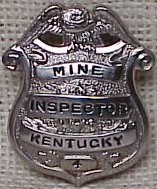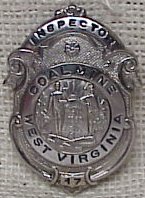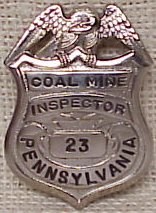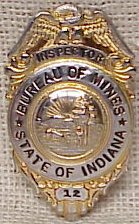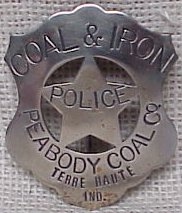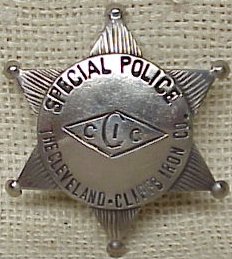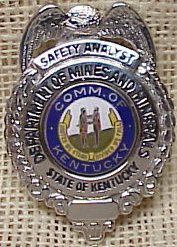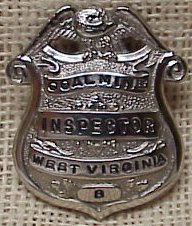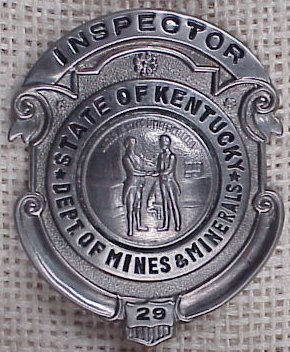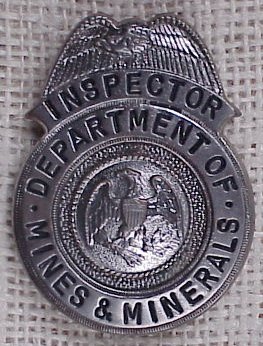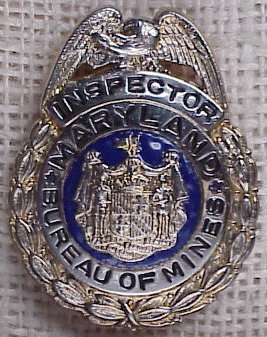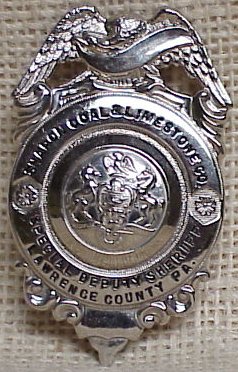MINING BADGES
These badges are from State Mine Inspectors, Mining Company Police, Guards, and Watchmen.
In 1865, the Pennsylvania State Legislature passed State Act 228 which empowered the railroads to organize private police forces. In 1866, a supplement to the act was passed extending the privilege to "embrace all corporations, firms, or individuals, owning, leasing, or being in possession of any colliery, furnace, or rolling mill within this commonwealth." Local Coal & Iron Police commanders were usually a coal or iron company superintendent. or other official. While sanctioned by the State all costs were paid by the coal and iron companies that employed them. They were company supported and controlled private police forces established to do the bidding of the coal and iron companies. The enabling legislation granted the Coal & Iron Police broad police powers on mine and mill property and in company towns. The 1866 legislation stipulated that the words, "coal and iron police" appear on their badges. This private police system grew to the point that by 1900 there were more than 5000 Coal & Iron Police in Pennsylvania. They figured prominently in strike breaking and other anti-union activity. The powers of the Coal & Iron Police were not curtailed until April of 1929 when Governor John S. Fisher, by executive order, ordered that industrial police wear uniforms, that their jurisdiction be limited to the actual protection of company property and that they be prohibited from "undue violence in making arrests, unnecessary display or use of weapons, and profanity". On June 30, 1931, Governor Pinchot revoked all coal and iron police commissions. They were later known as Industrial Police.

